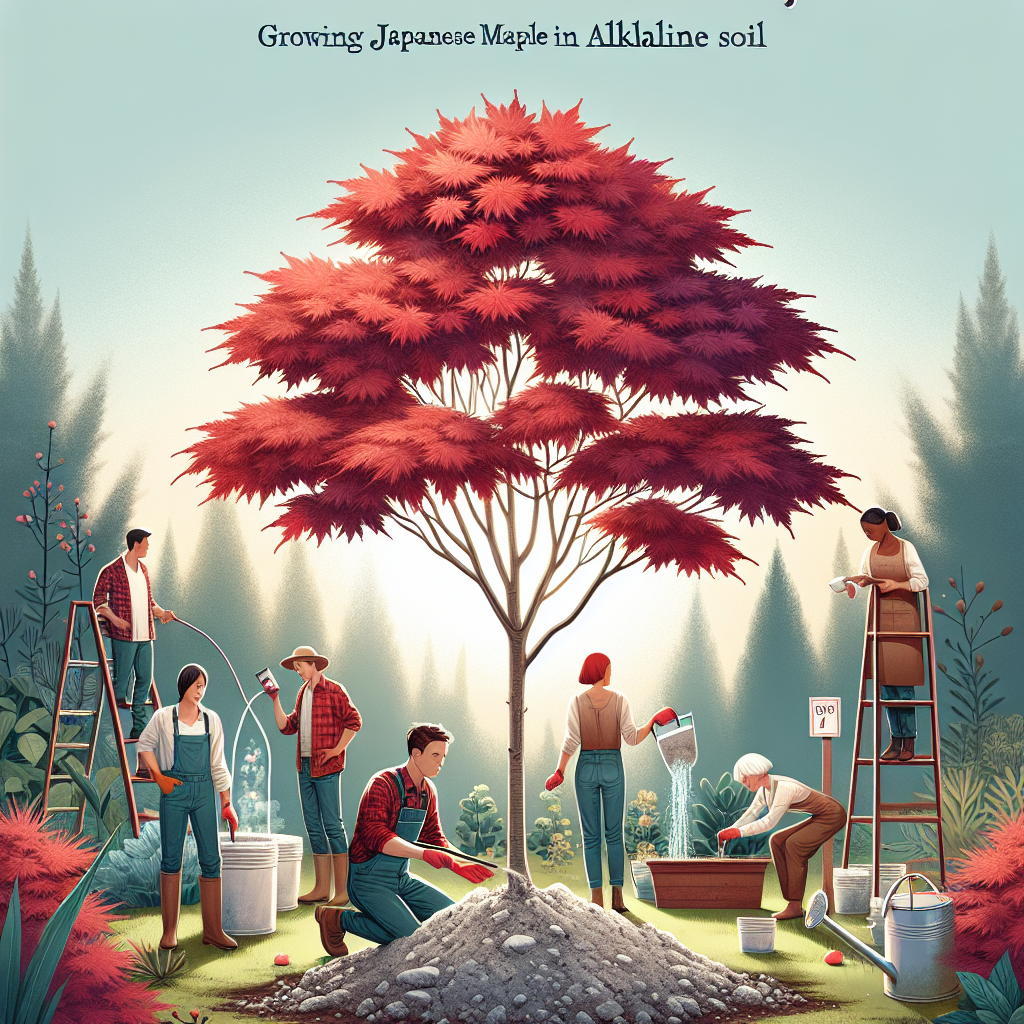Title: Tips for Growing Japanese Maple in Alkaline Soil
Introduction:
Japanese maples (Acer palmatum) are exquisite trees that bring a cascade of seasonal colors to any garden. They are often associated with the serene beauty of traditional Japanese gardens, and their delicate foliage is coveted by gardeners worldwide. Typically, Japanese maples thrive in acidic to neutral soils. However, garden enthusiasts who have alkaline soil aren’t out of luck. With proper know-how, you can still enjoy the splendor of these trees. In this blog post, we’ll delve into expert tips to help you grow a vibrant Japanese maple, even in alkaline conditions.
Understanding Soil pH:
Before delving into the nuances of growing Japanese Maples in less than ideal soil conditions, it’s essential to understand soil pH. The pH scale ranges from 0 to 14, with 7 being neutral. Soils with pH levels above 7 are alkaline. These conditions can limit the availability of certain nutrients essential for the growth of a Japanese maple. You can test your soil’s pH with a home test kit or by sending a sample to a local extension service.
Amending Alkaline Soil:
The first step towards a thriving Japanese maple in alkaline soil is to amend the soil. Incorporating organic matter like compost or peat moss can naturally lower the pH over time. Another approach is to apply sulfur or aluminum sulfate to the soil, following the recommended guidelines. This article from the Royal Horticultural Society provides an excellent guide on how to amend your soil properly.
Choosing the Right Variety:
Not all Japanese maples are created equal when it comes to soil tolerance. Some are more adaptable to higher pH levels. Varieties that are more resilient to alkaline soils include ‘Bloodgood’, ‘Shaina’, and ‘Shishigashira’. Conduct thorough research or consult your local nursery to select the best variety for your garden’s specific conditions.
Mulching and Fertilizing:
Mulch can be a savior for Japanese maples in alkaline soil. It helps to keep the roots cool, retains moisture, and as it decomposes, it can acidify the soil. Be careful not to pile mulch directly against the trunk, as this can encourage disease. Fertilizers created specifically for acid-loving plants can also help balance the soil pH. A product like Miracle-Gro’s Water Soluble Acid-Loving Plant Food is specially formulated for this purpose.
Irrigation Practices:
Water quality can significantly impact soil pH. If your water is alkaline, consider collecting rainwater to irrigate your Japanese maple. This natural source of water can assist in maintaining a more neutral soil pH, benefiting your Japanese maple’s health.
Proper Planting Technique:
When planting your Japanese maple, dig a hole that is as deep as the root ball but three times as wide. Backfill the hole with a mix of native soil and your chosen soil amendments. Ensuring good drainage is crucial as Japanese maples do not fare well in waterlogged conditions.
Potential Challenges:
Even with the best care, there may be challenges. Japanese maples in alkaline soils could exhibit signs of nutrient deficiencies, such as chlorosis (yellowing leaves). At the first sign of trouble, test your soil pH and consult with a specialist to correct any issues.
Maintenance and Upkeep:
Regular pruning is important to maintain the structure and health of your Japanese maple. Prune during the dormant season, and avoid removing more than 20% of the canopy at any one time. Additionally, monitor your tree for pests and diseases, taking action as necessary.
Conclusion:
Growing a Japanese maple in alkaline soil can be challenging, but it’s certainly not impossible. With the right amendments, variety selection, mulching, fertilizing, and care, you can enjoy the exquisite beauty of these trees in nearly any soil condition. Remember, patience is key – changing soil pH is a gradual process, but the stunning visual reward of a thriving Japanese Maple is well worth the effort.
Gardening is a journey, and each step teaches us valuable lessons. Don’t be disheartened by initial hiccups; even seasoned gardeners encounter set-backs. Turn challenges into learning opportunities and grow alongside your plants.
For more insights into cultivating beautiful landscapes in challenging conditions, keep following our blog. May your garden flourish and your Japanese maple stand as a testament to your dedication and green thumb prowess.
Happy gardening!

